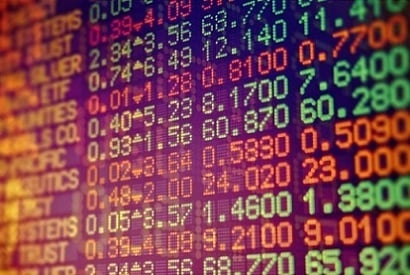While available to retail investors, leveraged and inverse ETFs are not for the unqualified and unprepared

ETFs are generally seen as low-cost investment instruments that are ideal for retail investors. But there are actually specialized ETFs, more sophisticated vehicles that deliver better returns but require investors to go beyond auto-pilot.
Originally intended for institutional investors, leveraged and inverse exchange-traded funds track an index like most ETFs, according to the Globe and Mail. However, they use a different mechanism to try and double or triple the index’s performance either directly or inversely.
In Canada, Horizons ETFs is the main provider of leveraged and inverse ETFs, which are managed by National Bank. Daniel Straus, head of ETF research and strategy at National Bank Financial, said most clients are first required to sign a formal agreement declaring that they’re “sophisticated” enough to understand them.
“They are exchange-listed and very easy to buy, but in our view they are not buy-and-hold investments,” Straus said, explaining that the complicated math that underlies them increases the risk of costly mistakes.
Leveraged and inverse ETFs mimic or short a specific index each day through derivatives like forwards and swaps. The instruments promise at the beginning of the day that they will deliver two to three times, or negative one or negative two times, the return of a reference index. “We call this a daily rebalancing – a daily resetting – of leverage,” Straus said.
The ETFs can deliver on their promise fairly well within a short period. But over longer periods, the correlation between the ETFs and their reference index can derail. For example, the Canadian dollar Horizons Crude Oil ETF rose by 36% over the past year. In contrast, the BetaPro Crude Oil 2x Daily Bull Canadian dollar hedged ETF advanced only 28%, far below the 2x multiple it should perform at. Similarly, the BetaPro Crude Oil 2x Daily Bear ETF lost only 64% over the same time period.
Straus said the ETFs’ correlation to their reference index is especially skewed in times of volatility. “If the index goes up and down, and you’re resetting your leverage at the end of the day – every day – it’s very difficult to recoup if you’ve reset it after a losing day,” he said.
Leveraged and inverse ETFs also cost investors a little more. The management expense ratio is typically just over 1% of total invested assets. “If it’s derivative-based, there may be swap fees and forward fees – which in Canada is not quoted as part of MER,” Straus said. “[Potential returns on inverse ETFs] need to be compared and contrasted with the borrowing costs or interest on margin.”
Related stories:
Is the growth of ETFs unstoppable?
Vanguard releases new Canadian fixed-income ETFs
Originally intended for institutional investors, leveraged and inverse exchange-traded funds track an index like most ETFs, according to the Globe and Mail. However, they use a different mechanism to try and double or triple the index’s performance either directly or inversely.
In Canada, Horizons ETFs is the main provider of leveraged and inverse ETFs, which are managed by National Bank. Daniel Straus, head of ETF research and strategy at National Bank Financial, said most clients are first required to sign a formal agreement declaring that they’re “sophisticated” enough to understand them.
“They are exchange-listed and very easy to buy, but in our view they are not buy-and-hold investments,” Straus said, explaining that the complicated math that underlies them increases the risk of costly mistakes.
Leveraged and inverse ETFs mimic or short a specific index each day through derivatives like forwards and swaps. The instruments promise at the beginning of the day that they will deliver two to three times, or negative one or negative two times, the return of a reference index. “We call this a daily rebalancing – a daily resetting – of leverage,” Straus said.
The ETFs can deliver on their promise fairly well within a short period. But over longer periods, the correlation between the ETFs and their reference index can derail. For example, the Canadian dollar Horizons Crude Oil ETF rose by 36% over the past year. In contrast, the BetaPro Crude Oil 2x Daily Bull Canadian dollar hedged ETF advanced only 28%, far below the 2x multiple it should perform at. Similarly, the BetaPro Crude Oil 2x Daily Bear ETF lost only 64% over the same time period.
Straus said the ETFs’ correlation to their reference index is especially skewed in times of volatility. “If the index goes up and down, and you’re resetting your leverage at the end of the day – every day – it’s very difficult to recoup if you’ve reset it after a losing day,” he said.
Leveraged and inverse ETFs also cost investors a little more. The management expense ratio is typically just over 1% of total invested assets. “If it’s derivative-based, there may be swap fees and forward fees – which in Canada is not quoted as part of MER,” Straus said. “[Potential returns on inverse ETFs] need to be compared and contrasted with the borrowing costs or interest on margin.”
Related stories:
Is the growth of ETFs unstoppable?
Vanguard releases new Canadian fixed-income ETFs



